
BOOT & FUN Berlin 2024 – We are exhibiting!
Hamburg, 17.11.2024 – After successfully participating in surf festivals in the north of Germany (Fehmarn) and a trade fair in the south,
The Stoked Zone continues the series and presents each month some of the best surf spots. Click here to continue surfing in February!
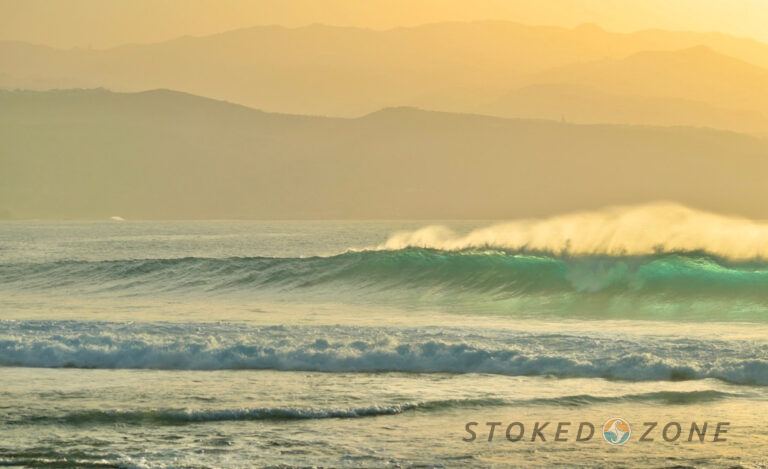
Gran Canaria offers good surfing conditions in February: Lots of swell due to storms in the North Atlantic, Passat winds that have not yet or hardly set in at all and lots of sunshine with already quite warm days. In addition, Gran Canaria is not yet as well-known among surfers as Fuerteventura for example, and the surf spots are therefore not overcrowded.
Country: Spain
Spot: Derecha del Faro
Location: Canary Islands
Best months: September – February
Surf level: All skill levels, especially good for intermediates and advanced surfers
Location of the spot: Large sandy bay, low tide exposes partly large stones directly at the lighthouse
Wave: long-running, moderate, right-breaking wave
Wave height: 1 – 2m
Wave direction: NW
Best wind direction: northwest to north
Optimal tides: Hightide – Midtide
Ground: Sand, stones at the lighthouse
Neoprene: 4/3 or lined 3/2
Water: 19°
Air: 19°
Dangers:
Advantages:
+ safe sandy bay (where the waves run out)
+ rarely crowds
+ many accommodation options in Maspalomas / Playa del Ingles
+ nightlife in Maspalomas
+ many alternative entertainment options
Disadvantages:
– from March to September, the Passat winds (NE-E) pick up
– waves mainly in winter
– small swell window
– many tourists in high season (e.g. Christmas to New Year’s Eve)
Tips:
As a beginner, you should go deeper into the bay near Maspalomas into water, as there are no stones there.
If you have chosen your accommodation in Maspalomas / Playa del Ingles and there is not enough swell, you will almost always find a wave on the north coast of Gran Canaria. The main beach of Las Palmas is definitely suitable for beginners with small and moderate waves. The other spots on the north coast are characterized above all by a very rocky entrance and offer excellent surfing conditions in some cases. You should have advanced surfing skills to go out there. Ask the locals before your surf session and don’t go into the water unknowingly or alone.
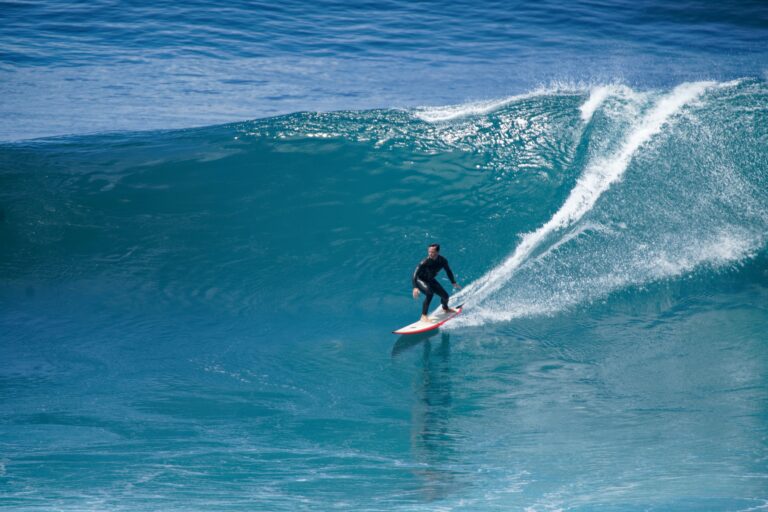
Madeira, the island of flowers, is primarily reserved for advanced and expert surfers. In winter, with the right swell, very high waves are surfable and Madeira has made a name for itself as a big wave destination.
Country: Portugal
Spot: Paul do Mar
Location: North of the Canary Islands, at the height of Morocco
Best months: September – April
Surfing level: Suitable for advanced and expert surfers
Location of the spot: On a rocky coast, directly in front of the village of Paul do Mar
Wave: Moderate to strong right-breaking wave
Wave height: 1 – 4m
Wave direction: NW
Best wind direction: Northeast
Optimal tides: Midtide to high tide
Ground:: Stones
Neoprene: 4/3
Water: 16°
Air: 19°
Dangers:
Advantages:
+ surfing is possible even with a smaller north-west swell
+ clean, long running right-breaking waves
+ beautiful sections in the wave
+ great natural surroundings
Disadvantages:
– rather rainy in winter
– conditions change greatly with the tides
– susceptible to winds between SE – W
– only suitable for advanced users and experts
Tips:
There are other excellent surf spots for big wave surfers near Paul do Mar, such as Jardim do Mar (see picture before this section). The beautiful island of Madeira can be perfectly combined with an exploration vacation in addition to surfing and is well suited for a family vacation.
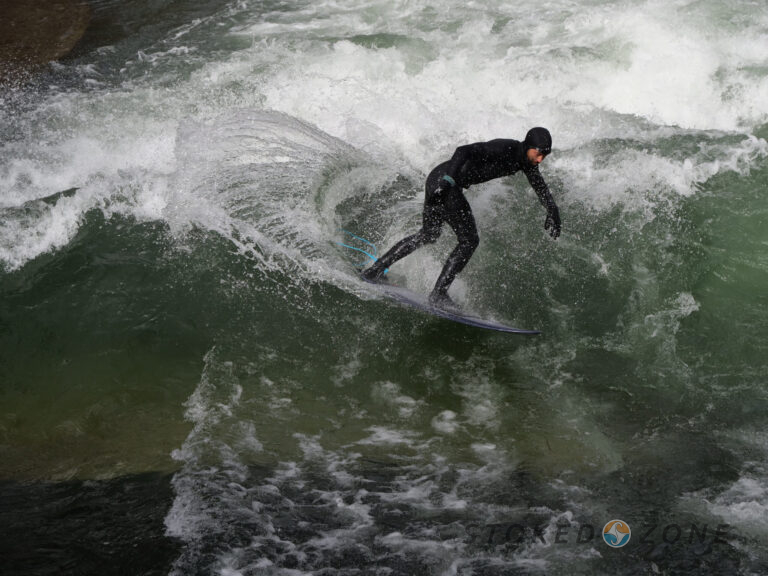
It doesn’t always have to be warm! Surfing in February is also possible in Germany! For landlocked surfers in Munich and the surrounding area, the Eisbach Wave is a very special wave. Here, the wave can be surfed almost all year round – day after day. And the “freaks” from Munich use construction spotlights to make sure that things get going on the wave in the evening. However, please bear in mind that the wave is only for really advanced surfers and experts and respect the locals or talk to them before you jump into the wave. Check out the following article if it’s your first time at the Eisbach:“Eisbach: What you should know before your first session“.
Country: Germany
Spot: Eisbachwelle
Location: Munich, near the center
Best months: All year round
Surfing level: Only suitable for advanced and expert surfers
Location of the spot: On the Eisbach, small river
Wave: Standing Wave
Wave height: 0.5 – 1.2m
Wave direction: Not relevant
Best wind direction: Not relevant (but rather little wind)
Optimal tides: Not relevant, but the Eisbach should carry enough water
Substrate: Sand and small stones
Neoprene: 6/5 or 5/4 (+ gloves and shoes)
Water: between 3 – 6°
Air: between 0 – 15°
Dangers:
Advantages:
+ Surfing all year round, with construction lights at any time of day or night
+ constant wave
+ good surfers from whom you can learn a lot
+ always an enthusiastic audience at the Eisbach
+ accessible by bike for many surfers who live nearby
+ in the center of Munich
Disadvantages:
– susceptible to weather changes in winter
– very cold water
– many surfers in summer
Tips:
Beginners should only try out surfing in a natural standing wave in Munich at the Floßlände in Thalkirchen.
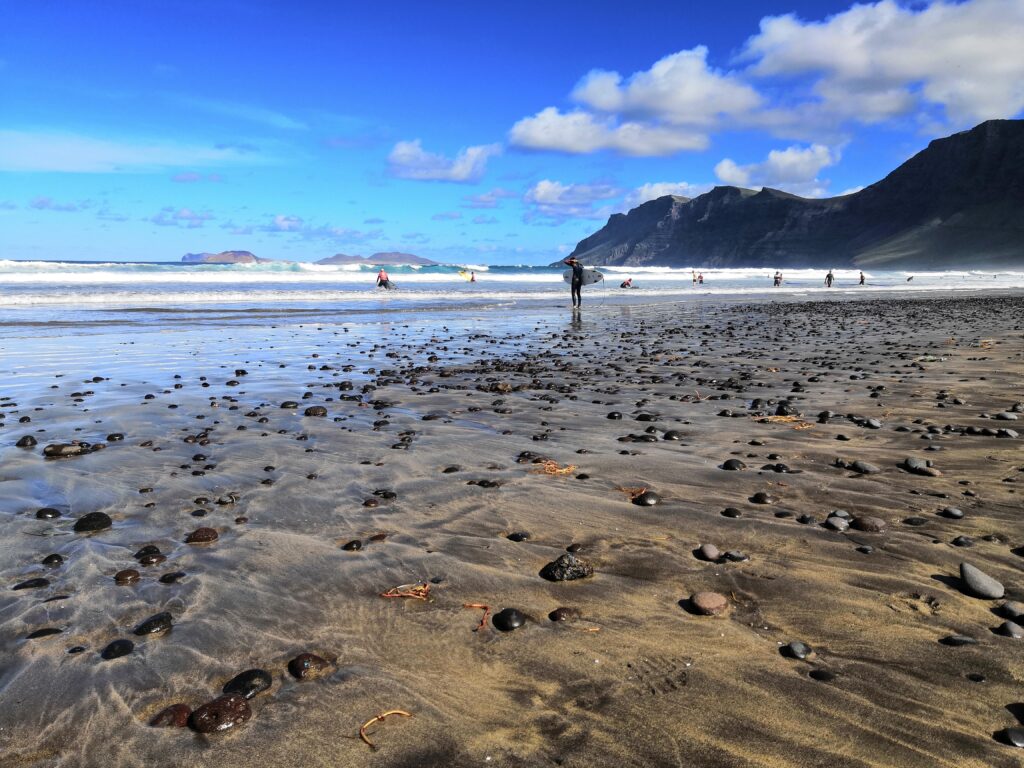
From the cold Eisbach water you can hop on a plane directly in Munich and fly to Lanzarote. Lanzarote is a top tip for beginners and advanced surfers. The large bay at Playa de Famara is really beginner-friendly, with a very relaxed atmosphere in the small fishing village of La Caleta de Famara
Country: Spain
Spot: Playa de Famara
Location: North coast of Lanzarote
Best months: September – March
Surfing level: Suitable for beginners, advanced and pros
Location of the spot: 6km long bay with fine sand
Wave: Many peaks on different sandbanks
Wave height: 0.5 – 2.5m
Wave direction: NW
Best wind direction: South-easterly winds
Optimal tides: Hightide
Ground: Sand
Neoprene: 4/3 – 3/2
Water: 20°
Air: 19°
Dangers:
Advantages:
+ enough space in the long bay
+ crowds spread out at the various peaks
+ spots for beginners and advanced surfers alike
+ nice fishing village La Caleta de Famara
+ lots of sun
+ good spots for advanced and experts not far away in the northwest of the island
+ well suited for mountain biking and cycling when surfing is not possible
Disadvantages:
– susceptible to north-westerly to north-easterly winds
– usually hot and flat in the summer
– rather arid lava island
Tips:
Check out “La Santa” just around the cornerto watch the pros surf!
If you have enough time and put a little effort into it, the offshore island of Isla Graciosa is a top tip for surfing. You can take the ferry from the northeast of Lanzarote.
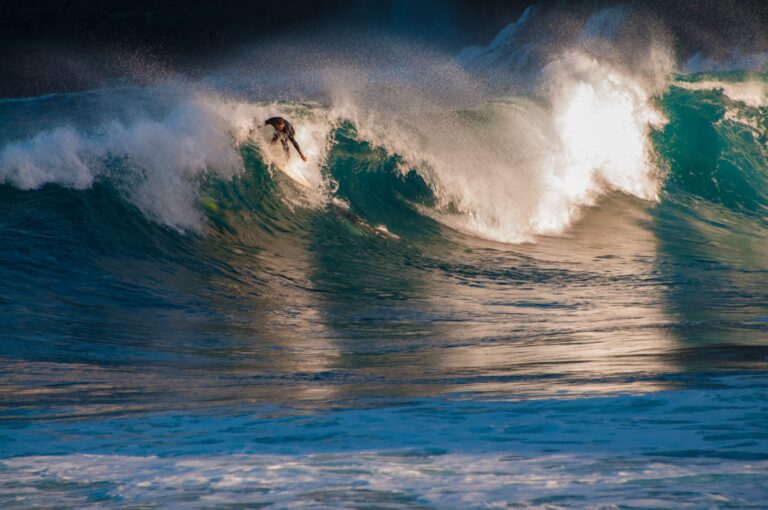
Here is the fourth of the large Canary Islands. Tenerife also offers excellent surfing conditions. We would like to introduce you to a spot in Las Americas that is very suitable for surfing in February and also has the warmest temperatures of all the spots described here.
Country: Spain
Spot: El Conquistador, Las Americas
Location: Canary Islands
Best months: September – April
Surfing level: Suitable for beginners, advanced and pros
Location of the spot: Larger bay in front of the Hotel Conquistador with stones and sandy sections
Wave: Pointbreak with left- and right-running wave
Wave height: 0.2 – 3m
Wave direction: SO – NW
Best wind direction: Easterly winds
Optimal tides: Midtide – Hightide
Ground: Sand, stones, sand-covered lava platform
Neoprene: Shorty, 3/2
Water: 18 – 21°
Air: 23°
Dangers:
Advantages:
+ beautiful point break
+ wave runs almost always
+ Surfing directly near the accommodation options
+ spot for beginners and advanced
+ good infrastructure
+ lots of sun
+ warm
+ various family hotels in the vicinity
Disadvantages:
– susceptible to westerly winds
– can get crowded (many tourists)
– only recommended for experts in large swells
Tip:
Check out the spots La Izquierda and La Derecha just around the corner if you’re an advanced surfer.
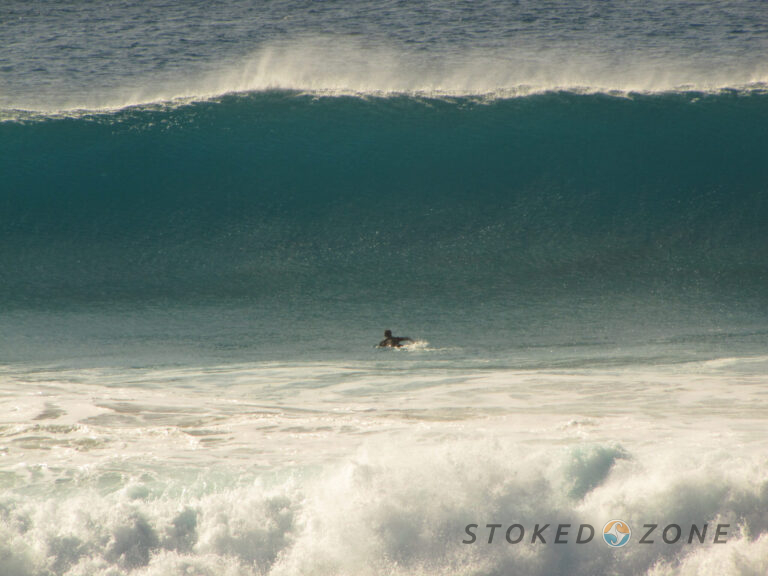
You can find more warm destinations for your surfing in February in our blog “Surfing in winter – warm destinations“.
For your further travel planning, we recommend our blog “All about surf equipment – what do I need for surfing”, especially if you are a beginner surfer or don’t have much experience yet.

Hamburg, 17.11.2024 – After successfully participating in surf festivals in the north of Germany (Fehmarn) and a trade fair in the south,
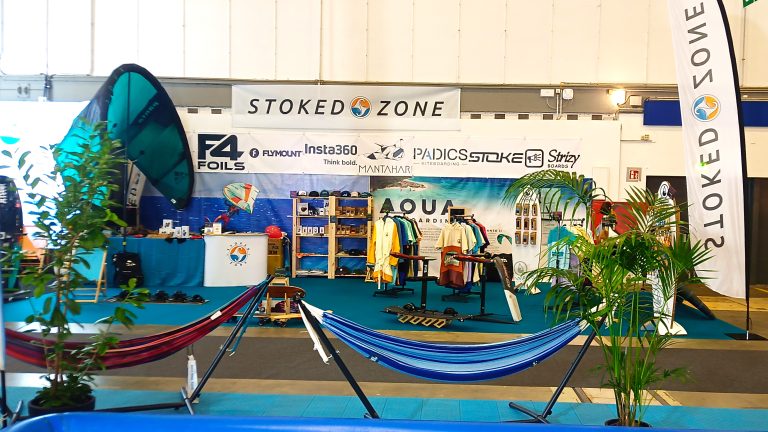
Hamburg, 10.12.2024 – Boot & Fun Berlin was another success for the development of the Stoked Zone as a platform for surf sports
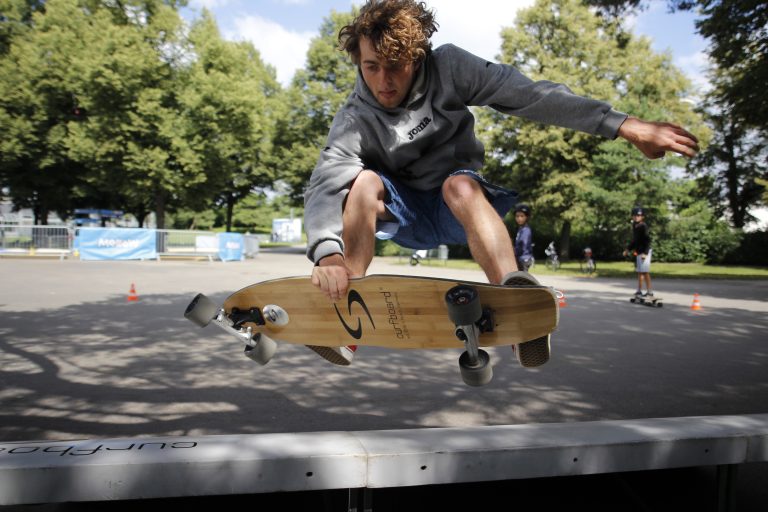
Hamburg 25.11.2024 We are very pleased to announce our partnership with the premium surfskate brand Curfboard.Curfboard is a German company with a